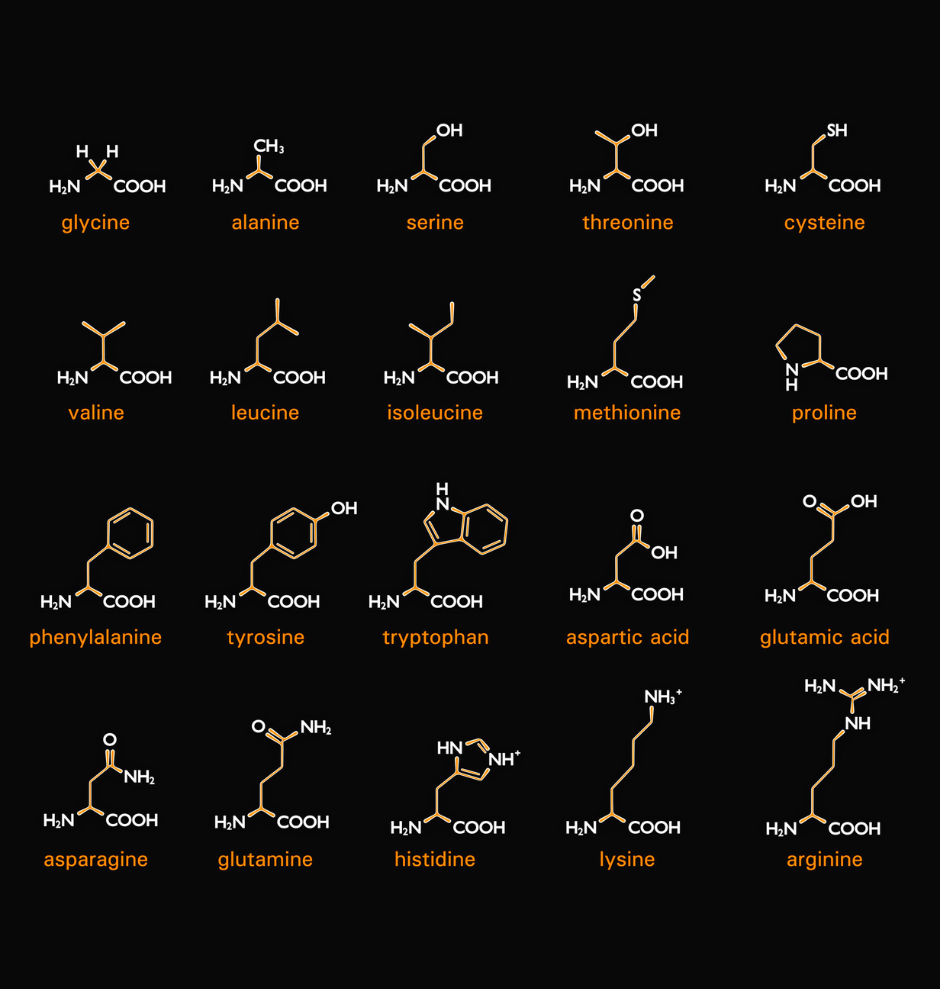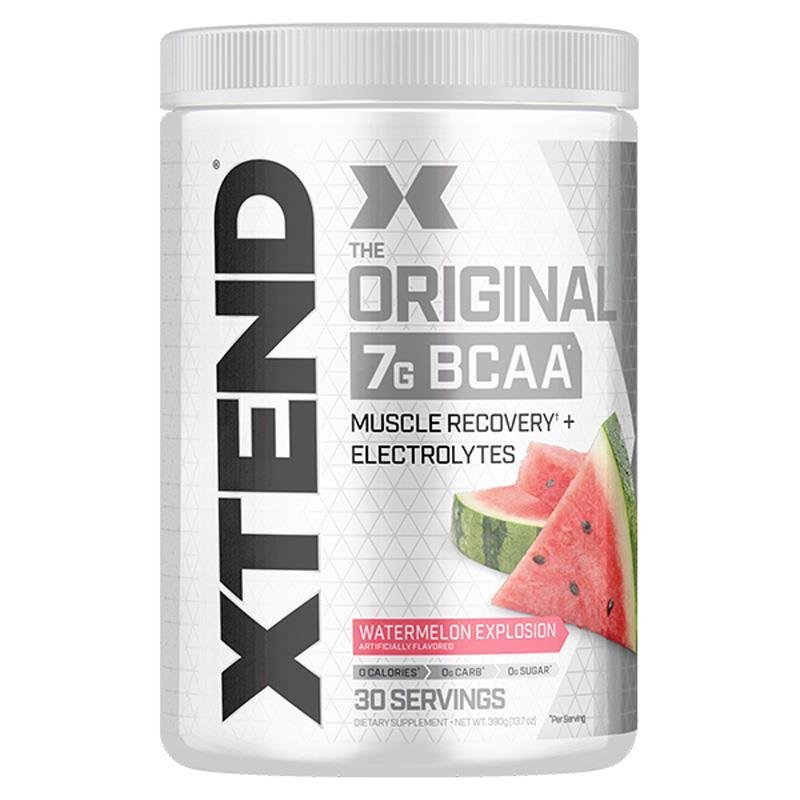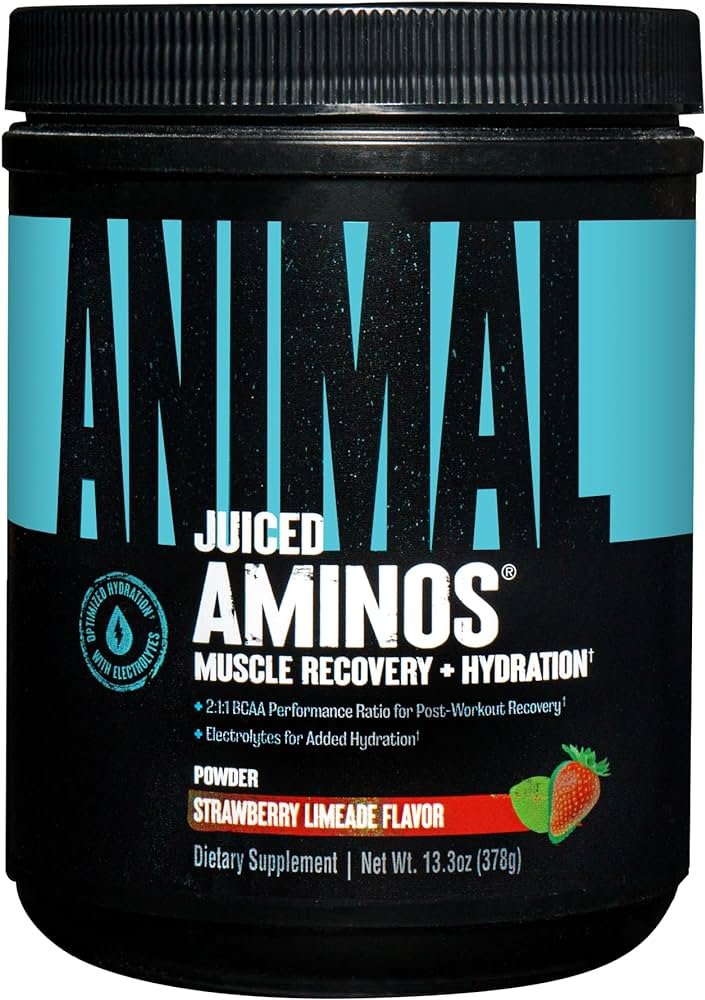This site contains product affiliate links. We may receive a commission, at no cost to you, if you make a purchase after clicking on one of these links. See Disclaimer.
In the world of fitness, optimal muscle recovery is one of the most important parts of building lean muscle mass, fat loss and exercise performance. There are many supplements available for recovery such as whey protein, magnesium and amino acids. All of these supplements help us with delayed onset muscle soreness.
Branched-Chain Amino Acids (BCAAs) have emerged as key players in promoting muscle growth, reducing fatigue, and enhancing overall athletic performance. To truly understand the best time to take BCAA supplements, it’s crucial to delve into the science behind them, as well as their counterparts: Essential Amino Acids (EAAs) and Electrolytes.

BCAAs, EAAs, and Electrolytes:
Essential Amino Acids (EAAs) are amino acids that the body cannot produce on its own and must be obtained through dietary sources. There are nine essential amino acids, each playing a crucial role in various physiological functions, including protein synthesis and overall health. Amino Acids are the building blocks of protein. Here is the list of all nine Essential Amino Acids:
- Histidine: Involved in the formation of histamine, a neurotransmitter that plays a role in immune response, digestion, and sexual function.
- Isoleucine: Participates in energy regulation, immune function, and hemoglobin production. It is also involved in muscle metabolism and tissue repair.
- Leucine: Known for its role in protein synthesis, leucine is a key regulator of muscle protein synthesis and helps in maintaining muscle mass.
- Lysine: Essential for protein synthesis, collagen formation, and the absorption of calcium. It also plays a role in the production of enzymes and hormones.
- Methionine: Acts as a precursor for other amino acids and is essential for the synthesis of proteins and important molecules like glutathione.
- Phenylalanine: Serves as a precursor for tyrosine, which is further used in the synthesis of neurotransmitters such as dopamine and norepinephrine.
- Threonine: Important for maintaining the balance of proteins in the body. It is also involved in the formation of collagen, elastin, and tooth enamel.
- Tryptophan: Precursor to serotonin, a neurotransmitter that regulates mood and sleep. Tryptophan is also involved in the synthesis of niacin (vitamin B3).
- Valine: Like isoleucine, valine is involved in energy production, tissue repair, and muscle metabolism.

Out of the nine Essential Amino Acids (EAAs), three of them are also classified as Branched-Chain Amino Acids (BCAAs). BCAAs are characterized by their molecular structure, which includes a branched side chain. The three BCAAs are:
- Leucine
- Isoleucine
- Valine
These three amino acids are unique in that they are metabolized primarily in skeletal muscle rather than the liver, and they play a crucial role in protein synthesis and energy production. BCAAs are particularly popular among athletes and fitness enthusiasts for their potential benefits in promoting muscle growth, reducing muscle soreness, and supporting recovery after exercise.
Electrolytes are essential minerals with an electric charge that conduct electrical impulses in the body. They play a crucial role in maintaining various physiological functions, including fluid balance, nerve function, and muscle contraction. The primary electrolytes in the human body include:
- Sodium (Na+): Sodium is the most abundant extracellular electrolyte and is crucial for maintaining fluid balance, regulating blood pressure, and supporting nerve function.
- Potassium (K+): Potassium is the primary intracellular electrolyte and is vital for maintaining fluid balance, nerve signals, and muscle contractions, including the heartbeat.
- Calcium (Ca2+): Calcium is essential for bone and teeth formation, blood clotting, muscle contractions, and nerve function.
- Magnesium (Mg2+): Magnesium is involved in hundreds of biochemical reactions in the body, including energy production, muscle function, and DNA synthesis.
- Chloride (Cl-): Chloride, often found in combination with sodium as sodium chloride (table salt), plays a role in maintaining fluid balance and osmotic pressure.
- Phosphate (HPO4^2- and H2PO4-): Phosphate is involved in bone and teeth formation, energy production (as part of ATP), and acid-base balance.

Electrolyte balance is crucial for normal physiological function. They are lost through various bodily processes such as sweating, urination, and vomiting. Replenishing electrolytes is particularly important during periods of intense physical activity, hot weather, illness, or dehydration.
Now that we’ve broken down amino acids and electrolytes in detail, let’s jump into the benefits of amino acid supplements. There are different types of amino acid supplements you will find on the market, which range from capsules to BCAA powder (powder form is generally the most popular). With so many different products and brands on the market, they all differ from how many grams of BCAAS are in them, the ratio of leucine, the amount of electrolytes etc.
Three types of amino acid supplements are:
1. BCAA’s Only: Such as XTEND Original BCAA Powder
The simplest form of BCAA supplements typically contains only the three essential amino acids – leucine, isoleucine, and valine. This minimalist approach is ideal for individuals looking to specifically target muscle protein synthesis and reduce muscle soreness. Which are both key benefits of bcaas.

2. BCAA & EAA Supplements: Such as EHP Labs Beyond BCAA + EAA Powder
For those seeking a more comprehensive amino acid profile, BCAA and EAA supplements offer a broader spectrum of essential amino acids. This combination ensures that the body has all the necessary building blocks for muscle repair and growth.

3. BCAA, EAA & Electrolyte Supplements: Such as Animal Juiced Amino Acids – BCAA/EAA Matrix + Electrolytes
To take it a step further, some supplements include not only BCAAs and EAAs but also electrolytes. This trifecta is designed to address dehydration and muscle cramping, particularly during intense exercise. Electrolytes help maintain fluid balance and enhance hydration, promoting optimal muscle function. This type of supplement is excellent for athletes engaging in prolonged or high-intensity workouts to help reduce muscle fatigue.

Why Timing Matters: Intra and Post-Workout Benefits
The timing of BCAA supplementation is crucial to unlocking their full potential. Taking BCAAs intra-workout (during exercise) or post-workout (after exercise) offers several benefits for recovery and muscle maintenance. Intra-workout supplementation helps prevent muscle breakdown during exercise, while post-workout consumption supports muscle repair and growth.
During exercise, especially in a fasted state, BCAAs act as an energy source, sparing muscle glycogen and reducing muscle protein breakdown especially during intense workouts.
Post-workout, they promote protein synthesis, aiding in the repair of damaged muscle fibers. This dual-action makes BCAAs a valuable tool for both endurance athletes and those focused on resistance training.

What About Rest Days:
Whether you should take supplements like BCAAs and electrolytes on rest days depends on your individual goals, dietary habits, and overall health. Here are some considerations to help you make an informed decision:
- BCAA Supplements:
- Muscle Maintenance: BCAAs, particularly leucine, can support muscle protein synthesis. If muscle maintenance or growth is a goal, taking BCAAs on rest days may help preserve muscle mass.
- Caloric Intake: Consider the caloric content of your BCAA supplement, especially if you are in a calorie deficit for weight management. Some people prefer to obtain amino acids from whole food sources.
- Electrolyte Supplements:
- Hydration: Electrolyte balance is crucial for hydration. If you are well-hydrated and have a balanced diet, you may not need electrolyte supplements on rest days. However, if you’re prone to dehydration or sweat heavily during workouts, electrolyte replenishment could be beneficial.
- Rest Day Goals:
- Recovery: If your rest day is part of an active recovery routine, BCAAs may contribute to muscle repair. However, if it’s a complete rest day with no physical activity, your nutritional needs may differ.
- Consultation with a Professional:
- Individualised Advice: If you have specific fitness goals or health concerns, it’s advisable to consult with a healthcare professional or a registered dietitian. They can provide personalised advice based on your unique circumstances.
In summary, whether you choose to take supplements on rest days depends on your overall dietary intake, fitness goals, and individual needs. While supplements can be useful in certain situations, they should not replace a well-balanced and nutrient-dense diet. Always prioritise whole foods and consider supplements as a complementary aspect of your nutrition strategy.
Conclusion: Tailoring Your Approach to Amino Acid Supplementation
When it comes to the right time to take BCAA supplements, one must consider personal fitness goals, workout intensity, and overall nutritional needs. Whether opting for BCAAs only, a blend of BCAAs and EAAs, or a comprehensive mix with electrolytes, the key is to align your supplement choice with your training routine for best results. By understanding the science behind amino acids and their benefits, you may choose to use BCAAs intra and post-workout to help reduce your recovery time and prevent delayed-onset muscle soreness.
